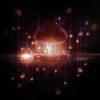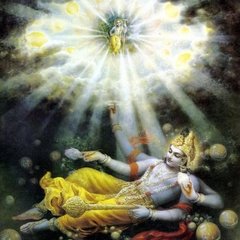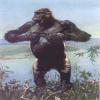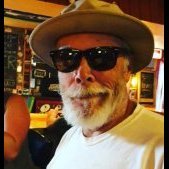Search the Community
Showing results for 'Dream'.
Found 7,590 results
-
Still no arguments are given. Apparently Giles as a Western scholar is considered guilty unless proven otherwise? Now here is Giles' translation of the dream of the butterfly (see the end of the chapter): https://en.wikisource.org/wiki/Chuang_Tzŭ_(Giles)/Chapter_2 Apparently Giles is describing the ideas of Chuang tzu as a form of pantheism. Now given the structure of the text all interpretations of the Chuang tzu are bound to be somewhat speculative, but I don't see why it should be ruled out that Chuang tzu actually saw the world from a pantheistic perspective. Moeller is doing both Chuang tzu and Giles a huge disservice by reducing them to exponents of their respective cultures and ignoring the sheer possibility that they had some thoughts of their own. Why are we to take an eccentric like Chuang tzu as an exponent of his own culture? More likely he had a mind of own and should be considered as such. So there is no reason to take traditional Chinese interpretations as more likely correct than the well informed Western ones.
-
"After I quit smoking, I used to occasionally get smoking dreams for several months. Later it became less in frequency. But, I used to get them once in a while for years. This shows how strong the subconscious impressions were and how strong the resulting craving was. Such powerful craving is addiction in my definition, no matter what you explain" If the bolded and italicized part is not meant to convey your own dream experience negating the shared understanding and experience of another, then please help me understand. Of course it's possible to learn from the experiences of others.
-
OK, so I went back and read the piece again trying to more precisely determine why I reacted to it the way I did first time around. Yes, reacted is the proper word because my response was more visceral than reasoned. Moeller's discussion was a highly detailed and lengthy analysis of the Butterfly dream passage. The crux of his analysis appears to be that Giles translation mapped western concepts of philosophy onto the story and that mapping constrained how the story should be interpreted. In doing so he missed the real meaning of the passage. He speaks of this process as if it were a conscious intentional one on the part of Giles. But this is only one side of the discussion. Moeller points to an alternative translation of the passage to support the notion that Giles interpretation misses the true meaning of the story. This alternative translation has its own conclusion in an alternative meaning of the story. I felt like Moeller's analysis read more like an indictment of Giles for having intentionally twisted the story to make it align with western philosophy. While, no doubt, Giles point of view as a translator steeped in western philosophy affected his translation, I cannot imagine Giles going to such extreme, as evidenced in Moeller's analysis, to force a particular interpretation. As I read the analysis I began to feel like the point was the analysis itself rather that elucidating any particular meaning. And so, I reacted to the tedium of the analysis. Was it worth my time to read and re-read Moeller's analysis. Yes, it was. It challenged my thinking and demonstrated the extreme to which western style analysis has to go sometimes to make a point. It confirmed for me the value of such literary devices as metaphor, paradox and allegory to convey complex concepts.
-
As an example, here's a comprehensive analysis from a contemporary Western philosopher of cultural bias in Giles’s translation of The Dream of the Butterfly.
-
You don't lose consciousness. It just changes shape and form to where you no longer recognize it as being the same as you are used to in your waking consciousness. Just like when you go to sleep, you reemerge back into the fullness of who you are. And as you wake up early in the morning and let go of thought, by meditating while even lying in your bed, you can then connect to your non-physical consciousness in a way that you can recognize it more fully in your waking mind that is now consciously entering the dream reality of quasi physical plane. Very often early in the morning, waking up 2 hours earlier and then going back to sleep more consciously free from any thought or resistance in anyway, then often at these times people have out of body experiences, waking initiated lucid dreaming, etc. This semi physical reality is also often called astral plane or even called the template reality where upon you decide the themes of your life in your physical waking experience. And one can even enter that more easily if they feel very good and use their powerful ability to focus in more and more good feeling ways so as to enter the full realization of all that you focus upon in more expansive ways. Everything is vibration and consciousness. Even 2 dimensional elemental consciousness of a rock is still conscious that it is this rock and not that rock. And that it is solid and not soft to whatever degree it is being that solidity of that which is who it is. And everything is connected via the same consciousness of all that exists who even experiences it self as all that exists even from beyond any dimension of experience of even forms of consciousness that exist completely out of the realm of any physical laws at all. So nothing is set in stone in a sense. Except the fact that you exist. For even the changing nature of ever change changes into the unchanging of your eternal and infinite nature as existance itself. But the death experience itself is always the most fully flowing path of least resistance to the full realization of all that you truely are. Does that mean you have to die before you allow yourself to know that? No, only if you like to live a miserable life and then shoot yourself like a rocket into that experience of fully coming to know yourself again and allowing all of that which you are beyond the idea of choice. But if you're living joyfully and then die, it will be like walking into a different reality of further continuation of who you are as who you've already always been allowing yourself to be. You don't lose identity in the way people think. You just go to the more of the new and the next and the more of all that is who you truely are. And it's not like your soul is judging this experience or your past, at all. For you've always been all of it. You just experience it more and more in every new way of allowing yourself to experience all of it. So you could say that those who died are more fully here and now. They haven't gone anywhere "other." And you didn't lose connection with them, just like you can never fully lose connection with your own soul. You can only pinch off your life force from fully allowing all of it to flow through more fully than you know you can in your moments of despair. But that doesn't mean you are or will ever or can ever be disconnected. Even if you wait a lifelong before fully allowing yourself to flow back in harmony with who it is you really are, as you then leave all of the resistance here with your body and flow back with the natural full free flowing nature of well being that is of all nature. But the best thing is to allow that full nature to come forth here in your now physical body, while still being alive! How to do that? You could look for something easy that you can appreciate in your now, and then experience your full nature to flow more fully through you in that moment of appreciation that you have now allowed yourself to achieve. But even a ceasing of judgement and making peace with your now reality can be of help as then you would also be more able to feel that natural appreciating nature of who it is you really are. But there is no one true path for everyone. All the paths are valid. And so, everyone exists, by virtue of that unconditionally loving nature and infinite wise nature of who it is you really are as all of that which is who you truely are in ever expanding realizations of more and better and even better yet, forevermore.
-
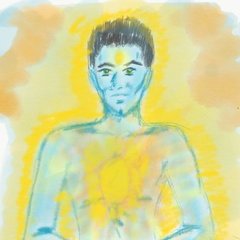
Brahma Rishis - The Mystic Masters who created their own Universes
dwai replied to dwai's topic in Hindu Discussion
I used to believe that too. But that is not what it means. Talk to a brahmajnani and see what they have to say. I have asked this question to a few that I know for sure are brahmajnanis, and they all say that what "world cessation means" is just that the world does take on a dream like quality but doesn't really "disappear". If you read the Tripura Rahasya, it clearly articulates that the outcome of "enlightenment" is different depending on the sage. It is interesting to discuss this, but would require a separate thread. Sages like Ramakrishna Paramahamsa, Ramana Maharshi, Nisargadatta Maharaj, Papaji, all continued to interact with the world and teach, even though they were jivanamuktas. And each had their own unique perspective on things. -

Brahma Rishis - The Mystic Masters who created their own Universes
s1va replied to dwai's topic in Hindu Discussion
Many Advaidic texts directly contradict what I highlighted above and state the opposite. Including Vivekachoodamani by Adi Shankara. Like how a dreamer wakes up from the dream, it is clearly stated as cessation. I will just leave it at that since this is not the core subject matter of this discussion. -
Deep sleep is like the thoughtless samadhi sensed in that concept-less moment of cognizing paradox, or that space of pause between two breaths. A natural feeling of being, from which one concludes, "I slept." But it is merely ignorance(that which is not), and one would more accurately state, "I forgot myself." "It is a mistake to think that one enters sushupti(deep sleep) and that one leaves it", points to that unidentified identity that is one's true nature(which is the only nature, so there is essentially no nature). If one never enters deep sleep(forgetfulness) then one also never truly enters waking or dream(knowing of). The mind reels at the prospect, fearing its demise or collapse of its structure. One becomes so unquestioningly identified with the thinker, yet supreme intellect intuitively sees the truth spontaneously. There are no thoughts to interrupt, as there is no thinker. There is only a falling asleep of sorts, identical to the experience of remembering. There is no real waking or dream representative of objective knowledge, and there is no real deep sleep representative of the dark veil of ignorance. There is only witnessing by that which cannot be witnessed, wherein the ignorance of forgetting forgets itself. It never sleeps, and is always woke. From behind these immense curtains of consciousness, the flimsy veil of forgetfulness and remembrance is exposed in all of its short-lived transparence. Throughout all passing states, "samadhi" never enters and never leaves. Ramana said, "Holding on to the supreme state is Samadhi. When it is with effort due to mental disturbances, it is Samprajnata. When these disturbances are absent, it is Nirvikalpa. Remaining permanently in the primal state without effort is Sahaja." This means one must BE "samadhi." Being oneself is effortless, even if one seems to forget and then remember. If one insists on looking upon "samadhi" from afar, instead of fearlessly being it, one will miss oneself and continue appearing to "slip in and out" of that "continuous samadhi".
- 53 replies
-
- 3
-

-
My favorite definitions of Shikantaza: One way to categorize the meditation practice of shikantaza, or “just sitting,” is as an objectless meditation. This is a definition in terms of what it is not. One just sits, not concentrating on any particular object of awareness, unlike most traditional meditation practices, Buddhist and non-Buddhist, that involve intent focus on a particular object. Such objects traditionally have included colored disks, candle flames, various aspects of breath, incantations, ambient sound, physical sensations or postures, spiritual figures, mandalas, teaching stories, or key phrases from such stories. Some of these concentration practices are in the background of the shikantaza practice tradition, or have been included with shikantaza in its actual lived experience by practitioners. But objectless meditation focuses on clear, nonjudgmental, panoramic attention to all of the myriad arising phenomena in the present experience. Such objectless meditation is a potential universally available to conscious beings, and has been expressed at various times in history. This just sitting is not a meditation technique or practice, or any thing at all. “Just sitting” is a verb rather than a noun, the dynamic activity of being fully present. … it is objectless not only in terms of letting go of concentration objects, but also in the sense of avoiding any specific, limited goals or objectives… just sitting is not a technique or a means to some resulting higher state of consciousness, or any particular state of being… … [for Dogen] simply just sitting is expressed as concentration on the self in its most delightful wholeness, in total inclusive interconnection with all of phenomena… Taigen Dan Leighton The prototype for the unity of practice and enlightenment, as all Dogen students know, is “zazen- only” (shikan taza). In a nutshell, it consists of four aspects: (1) It is that seated meditation which is objectless, imageless, themeless, with no internal or external devices or supports, and is nonconcentrative, decentered, and open-ended. Yet it is a heightened, sustained, and total awareness of the self and the world. (2) It seeks no attainment whatsoever, be it enlightenment, an extraordinary religious experience, supernormal powers, or buddhahood, and accordingly, is non-teleological [lacks “purposeful development towards a final end”] and simply ordinary. (3) It is “the body and mind cast off” (shinjin datsuraku) as the state of ultimate freedom, also called “the samadhi of self-fulfilling activity” (jijuyu zammai). And (4) it requires single-minded earnestness, resolve, and urgency on the part of the meditator. Hee-Jin Kim For Dogen, seated meditation, or zazen, was the very essence of the Buddhist religion… the practice of this zazen was not simply an important aid to, nor even a necessary condition for, enlightenment and liberation; it was in itself sufficient: it was enough, he said, “just to sit” (shikan taza), without resort to the myriad subsidiary exercises of Buddhist spiritual life. Indeed (at least when rightly practiced) zazen was itself enlightenment and liberation: it was the ultimate cognition, the state he called “nonthinking” (hi shiryo) that revealed the final reality of things; it was the mystic apotheosis [exalted or glorified example], the “sloughing off of body and mind” (shinjin datsuraku), as he said, that released man into this reality. Such practice, then (at least when rightly understood) was its own end, as much the expression as it was the cause of transcendence: it was “practice based on enlightenment” (shojo no shu); it was the activity of buddhahood itself (butsugyo). As such, this was, ultimately speaking, no mere human exercise: it was participation in the primordial ascesis (gyoji, continuous practice) of being itself, that which brought forth matter and mind, heaven and earth, the sun, moon, stars, and constellations. … For Menzan [1683-1769, “the chief architect of modern Soto dogmatics”] and his church, Dogen’s zazen is like no other: it is the practice of “nonthinking,” a subtle state beyond either thinking or not thinking and distinct from traditional Buddhist psychological exercises of concentration and contemplation; it is “just sitting,” a practice in which… all striving for religious experience, all expectations of satori, is left behind. This zazen is nothing but “the mystic practice of original verification” (honsho myoshu), through which from the very start one directly experiences the ultimate nature of mind. Carl Bielefeldt Shikantaza…is the mind of somebody facing death. Let us imagine that you are engaged in a duel of swordsmanship of the kind that used to take place in ancient Japan. As you face your opponent you are unceasingly watchful, set, ready. Were you to relax your vigilance even momentarily, you would be cut down instantly. A crowd gathers to see the fight. Since you are not blind you see them from the corner of your eye, and since you are not deaf you hear them. But not for an instant is your mind captured by these impressions. When you thoroughly practice shikantaza you will sweat—even in the winter… Sit with such intensely heightened concentration, patience, and alertness that is someone were to touch you while you are sitting, there would be an electric spark! Sitting thus, you return naturally to the original Buddha, the very nature of your being. Hakuun Ryoko Yasutani The style of meditation called “silent illumination” [Ch. mozhao, Jap. mokusho; the early Caodong/Soto meditation practice that Rujing and Dogen came to call shikantaza] is one of the great practices of the Chan tradition… This practice originated in India, where it was called shamtatha- vipashyana, or serenity-insight. The aim of this practice is a mind unburdened with thoughts. This leads the mind to profound awareness about its own state… Silent illumination is a very peaceful style of meditation in which there is not one thought, yet your mind is extremely clear. I use three phases to describe this state: first, “bright and open”; second, “no scattered thoughts”; and third, “not one thought.” When the mind drops all use of words, it becomes bright and open; this is the first characteristic. Next, “no scattered thoughts” refers to single-mindedness—total concentration on the method. But when you finally forget the method itself, and no one thought remains, that is genuine serenity. Ultimately, Silent Illumination is the method of no method… Silent illumination is just dropping all thoughts and words and going directly to the state of Chan. I do not recommend this method to people too often… You can be just idling, having very subtle thought, and believe you are practicing Silent Illumination. You can be silent without illuminating anything. Sheng Yen Suzuki Roshi always talked about shikantaza as one’s day-to-day, moment-to-moment life of selflessness… Suzuki Roshi’s simple day-to-day activities—the way he would sit down and stand up, eat his dinner, walk, put on his sandals—this was his expression of shikantaza. Everyday activity with no selfishness—just doing the thing for the thing—this was his shikantaza. We usually say that shikantaza means “just sitting.” And that’s true. Just putting on your shoes, too. But this “just” has a special meaning. It means “without going any further” or “without adding anything extra.” … But the shikantaza, or the “just doing,” is the selfless activity of just doing within the dream… I think about shikantaza as a state in which our thought and our activity have no gap… Sojun Mel Weitsman Neuroscientists use these words to describe what we call shikantaza: panoramic receptive non- judgmental attention. This is different than focused attention, which includes such practices as breath meditation, where the attentional field is narrowed and "pointed" toward an object. Different parts of the brain are activated during these two types of meditation. Roshi Joan Halifax Katagiri used to say shikantaza isn't anything in particular and that also fits for the Soto school's lack of single view on the issue. Katagiri also called following the breath shikantaza but once I could follow the breath, told me to not attach to anything. At least several of his successors, though, just teach following the breath as shikantaza. Dogen's brilliant reframe on this practice and reconstruction of the tradition was based on adding “wholeheartedness” which changed silent illumination into “earnest vivid sitting” (literal trans. of shikantaza). RE: “wholeheartedness,” what I encourage is full devotion to no particular thing. That's a little different from seeing wholeheartedness as a state. For one thing, I emphasize the “whole” and “heart” parts of wholehearted – nothing left out, including the flowing emotions. Nothing left out includes samadhi states, dhyanic states, and insight/realization as well. But like a falling maple leaf, showing front, showing back. Dosho Port I would say shikantaza is natural awareness as is (so that the just sitting is indeed “just” “sitting”). Awareness is being human, so there is not a need to “stay aware” (or a particular state that we need to add). Likewise, it is not a matter of making “effort at awareness.” Elihu Genmyo Smith When we sit facing the wall, there is nothing in front of us as object. There is only the wall. We have no object in our mind because we don’t visualize anything, don’t concentrate on a mantra, and don’t pay any special attention to the breath. We just sit. Still many different kinds of thought come and go naturally. It is very clear that thoughts, emotions, and daydreams are illusions like bubbles rising in water. We let go of them. No clinging to them, chasing after them, or pushing them away. We really do nothing but sit. This is what Dogen Zenji meant when he says, “thinking of not-thinking.” We cannot say that there is no thinking. And we cannot say that we are thinking. “Thinking of not-thinking is the precise expression of the reality of mind in zazen. It is like a car engine idling. When the transmission is in neutral, even though the engine is moving, the car does not move. Even though thoughts are coming and going, we take no action based on those thoughts. Thoughts are simply idling. We don’t create karma. This is what Dogen Zenji meant in Zuimonki when he said zazen is the true form of the self and non- doing or not action… In Shobogenzo Zazenshin, Dogen Zenji said, “In order to think (shiryo) of not-thinking (fu-shiryo), we use beyond-thinking (hi-shiryo). This means that what is happening in our zazen is not a matter of thinking or not-thinking. We “do” nothing; neither “to think” nor “not to think.” We put our entire self on the ground of beyond-thinking. On that ground, sometimes many thoughts come up, sometimes, no thoughts arise… In our daily lives, we try to study from teachers and books to correct the distortions of self- centeredness. But in zazen we let go of all thoughts, even thoughts of making corrections… Our practice of just sitting is the practice of the bodhisattva vows and repentance. Buddhas and ancestors’ zazen is the vow to save all living beings… Shohaku Okumura Do not concentrate on any particular object or control your thought. When you maintain a proper posture and your breathing settles down, your mind will naturally become tranquil. When various thoughts arise in your mind, do not become caught up by them or struggle with them; neither pursue nor try to escape from them. Just leave thoughts alone, allowing them to come up and go away freely. The essential thing in doing zazen is to awaken (kakusoku) from distraction and dullness, and return to the right posture moment by moment… Dogen called his meditation practice shikantaza, which literally means “just sitting.” In shikantaza we sit without the koans used in Rinzai Zen. In our zazen, body and mind sit without any techniques—koans, mantras, visualizations, and so on. we find an upright posture, breathe through our nose quietly and deeply from our abdomen, and keep our eyes open. We let go of whatever thoughts arise within our mind. It is simply sitting upright without any expectation or gaining idea. Dogen’s essential teaching is that practice and enlightenment are one. Practice is not a method to make a deluded person into an enlightened being. Practice without self-centeredness is itself enlightenment. This kind of zazen practice teaches us to sit upright wherever we are. Sometimes our mind is calm and sometimes our mind is busy. Sometimes we feel peaceful, and sometimes we are in the midst of a storm. We neither cling to nor avoid any condition, but keep sitting in an upright posture. We try to live in this upright manner, not only in zazen but in our daily lives. When we deviate from uprightness, we are aware of it and return to it. Soto Zen Buddhism International Center (Sotoshu Shumucho) Once you realize that you are thinking when you are supposed to be doing nothing, and return to zazen, the thoughts which appeared as clearly before as if they were pictures on a TV. screen, disappear as suddenly as if you had switched off the TV. Only the wall is left in from of you. For an instant… this is it. This is zazen. Yet again thoughts arise by themselves. Again you return to zazen and they disappear. We simply repeat this; this is called kakusoku (awareness of Reality). The most important point is to repeat this kakusoku billions of times. This is how we should practice zazen. If we practice in this way we cannot help but realize that our thoughts are really nothing but secretions of the brain. Just as our salivary glands secrete saliva, or as our stomachs secrete gastric juices, so our thoughts are nothing but secretions of the brain. Uchiyama Kosho We say our practice should be without gaining ideas, without any expectations, even of enlightenment. This does not mean, however, just to sit without any purpose. This practice free from gaining ideas is based on the Prajnaparamita Sutra. However, if you are not careful, the sutra itself will give you a gaining idea. It says, “form is emptiness and emptiness is form.” But if you attach to that statement, you are liable to be involved in dualistic ideas: here is you, form, and here is emptiness, which you are trying to realize through your form. So “form is emptiness, and emptiness is form” is still dualistic. But fortunately our teaching goes on to say, “Form is form and emptiness is emptiness.” Here there is no dualism. When you find it difficult to stop your mind while you are sitting and when you are still trying to stop your mind, this is the stage of “form is emptiness and emptiness is form.” But while you are practicing in the dualistic way, more and more you will have oneness with your goal. And when your practice becomes effortless, you can stop your mind. This is the stage of “form is form and emptiness is emptiness.” To stop your mind does not mean to stop the activities of mind. It means your mind pervades your whole body. Your mind follows your breathing. With your full mind you form the mudra in your hands. With your whole mind you sit with painful legs without being disturbed by them. This is to sit without any idea of gain… Practice does not mean that whatever you do, even lying down, is zazen. When the restrictions you have do not limit you, this is what we mean by practice. When you say, “Whatever I do is Buddha nature, so it doesn’t matter what I do, and there is no need to practice zazen,” that is already dualistic understanding of our everyday life. If it really does not matter, there is no need for you even to say so. As long as you are concerned about what you do, that is dualistic. If you are not concerned about what you do, you will not say so. When you sit, you will sit. When you eat, you will eat. That is all. If you say, “It doesn’t matter,” it means that you are making some excuse to do something in your own way with your small mind. It means you are attached to some particular thing or way. That is not what we mean when we say, “Just to sit is enough,” or “Whatever you do is zazen.” Of course whatever we do is zazen, but if so, there is no need to say it. Strictly speaking, any effort we make is not good for our practice because it creates waves in our mind. It is impossible, however, to attain absolute calmness of our mind without any effort. We must make some effort, but we must forget ourselves in the effort we make. In this realm there is no subjectivity or objectivity. Our mind is just calm, without even any awareness. In this unawareness, every effort and every idea and thought will vanish. So it is necessary for us to encourage ourselves and to make an effort up to the last moment, when all effort disappears. You should keep you mind on your breathing until you are not aware of your breathing. Shunryu Suzuki … These sages universally maintain that absolute reality and the relative world are “not-two” (which is the meaning of “nondual”), much as a mirror and its reflections are not separate, or an ocean is one with its many waves. So the “other world” of Spirit and “this world” of separate phenomena are deeply and profoundly “not-two,” and this nonduality is a direct and immediate realization which occurs in certain meditative states—in other words, seen with the eye of contemplation—although it then becomes a very simple, very ordinary perception, whether you are meditating or not. Every single thing you perceive is the radiance of Spirit itself, so much so, that Spirit is not seen apart from that thing: the robin sings, and just that is it, nothing else. This becomes your constant realization, through all changes of state, very naturally, just so. And this releases you from the basic insanity of hiding from the Real. But why is it, then, that we ordinarily don’t have that perception? All the great Nondual wisdom traditions have given a fairly similar answer to that question. We don’t see that Spirit is fully and completely present right here, right now, because our awareness is clouded with some sort of avoidance. We do not want to be choicelessly aware of the present; rather, we want to run away from it, or run after it, or we want to change it, alter it, hate it, love it, loathe it, or in some way agitate to get ourselves into, or out of, it. We will do anything except come to rest in the pure Presence of the present. We will not rest with pure Presence; we want to be elsewhere, quickly. The Great Search is the game, in its endless forms… ... it becomes obvious that you are not entering this state, but rather, it is a state that, in some profound and mysterious way, has been your primordial condition from time immemorial. You have, in fact, never left this state for a second… But if that is so, then why even do spiritual practice? Isn’t that just another form of the Great Search? Yes, actually, spiritual practice is a form of the Great Search, and as such, it is destined to fail. But that is exactly the point. You and I are already convinced that there are things that we need to do in order to realize Spirit. We feel that there are places that Spirit is not (namely, in me), and we are going to correct this state of affairs. Thus, we are already committed to the Great Search, and so nondual meditation makes use of the fact and engages us in the Great Search in a particular and somewhat sneaky fashion… The essence of Dzogchen… in a nutshell: If Spirit has any meaning, it must be omnipresent, or all-pervading and all-encompassing. There can’t be a place Spirit is not, or it wouldn’t be infinite. Therefore, Spirit has to be completely present, right here, right now, in your own awareness. That is, your own present awareness, precisely as it is, without changing it or altering it in any way, is perfectly and completely permeated by Spirit. Furthermore, it is not that Spirit is present but you need to be enlightened in order to see it. It is not that you are one with Spirit but just don’t know it yet. Because that would also imply that there is some place Spirit is not. No, according to Dzogchen, you are always already one with Spirit, and that awareness is always already fully present, right now. You are looking directly at Spirit, with Spirit, in every act of awareness. There is nowhere Spirit is not. Further, if Spirit has any meaning at all, then it must be eternal, or without beginning and end. If Spirit had a beginning in time, then it would be strictly temporal, it would not be timeless and eternal. And this means, as regards your own awareness, that you cannot become enlightened. You cannot attain enlightenment. If you could attain enlightenment, then that state would have a beginning in time, and so it would not be true enlightenment. Rather, Spirit, and enlightenment, has to be something that you are fully aware of right now. Something you are already looking at right now… Meditation rearranges the puzzle; Dzogchen doesn’t touch a thing. Thus the pointing-out instructions usually begin, “Without correcting or modifying your present awareness in any way…”… Ken Wilber Please train yourself thus: In the seen, there will be just the seen. In the heard, there will be just the heard. In the sensed, there will be just the sensed. In the cognized, there will be just the cognized. When for you, in the seen there is just the seen, in the heard just the heard, in the sensed just the sensed, in the cognized just the cognized, then you will not identify with the seen, and so on. And if you do not identify with them, you will not be located in them; if you are not located in them, there will be no here, no there, or in-between. And this will be the end of suffering. … In this way he abides contemplating the body as body [feelings as feeling, mind as mind, mind- objects as mind-objects] internally, or he abides contemplating the body as body externally, or he abides contemplating the body as a body both internally and externally. Or else he abides contemplating in the body its arising factors, or he abides contemplating in the body its vanishing factors, or he abides contemplating in the body both its arising and vanishing factors. Or else mindfulness that “there is body” is simply established in him to the extent necessary for bare knowledge and mindfulness…. Shakyamuni Buddha
-
Someone has to be really desperate in order to attack. So if you give them even a little bit of love. They will then exist forever in a rapturous extacy of blissful full body orgasms after another. And then they just go to sleep. Or faint and dream forever of paradise. Or well... You turn their life upside down. Inside out. x)
-
Uh, yes exactly! except not an external source, an internal source! And so you dream awake! Like dolphins already do! You dream on purpose! You dream deliberately! For dolphins are known for their tremendous capability of healing! AND THAT PROOFS OUR PURPOSE as HUE MANS! That we are ment to be stewards of this entire planet, just as the dolphins are stewards of the oceans! You have to always reach for the highest perspective of all of that which is all of that which is all of that which is what you truely are! The absolute best of the best perspective. And this has tremendous gravitational attractive power which then yields the absolute best result every single time, ever expanding outwards into ever more satisfying ways experiences of perspectives of yet another way that all of existance has of experiencing itself, in ever more satisfying ways, ever expanding in the infinitely and eternally worthy nature of all that we are.
-
Is there a difference between thought, intention and observation and awareness in meditation?
Jonesboy replied to AugustGreig's topic in Daoist Discussion
What I am trying to point out in your example is notice that the mind is noticing the thoughts. That the mind is now distracted with hearing the thoughts. We all notice when meditating that we are focusing let's say on the breath and the next thing we know we are aware that we are lost in some day dream or lost in some thoughts right? Once we go deeper in silence we are able to observe lets say our thoughts or even your example you notice there is some activity in the mind. Yet, there is still this mind that is drawn to the activity of whatever is arising in the mind. It pays attention to that activity, the mind is drawn to it. What is drawn to that activity that is arising? When we start meditation it is easy to notice that it is hard to keep the mind focused on the breath for instance. We are on focusing on the breath, get lost in thoughts, notice it and return back to the breath. The same thing is happening when one is in silence but the mind is being drawn to some activity that is arising. Just like with breath meditation you have no control of the mind focusing on that activity. It is a deeper thought that you are getting lost in. You may be at a level of silence but the mind then takes over to notice the activity that is arising in the silence. The next step is to get to the stage where whatever arises within the silence, it arises without you having any focus of it. It arises and passes through without the mind going there is a thought, there is a sound, there is a vision or some activity. You are pure awareness without attaching to whatever arises in the mind. -
I have no problem with beating a dead horse. Redundancy is an excellent teacher. It's even use in brain-washing. The reason I speak of reducing is that I believe it is impossible for 99.9% of the people on the planet to actually eliminate their wants and desires. It's not the way the human mind works. Sure, wants and desires are not real things - they are mental concepts. But recall that I have already admitted that dreams are real for the person having the dream. Likewise, wants and desires are real for the person who has them. And there will always be a mountain until we climb over it or walk around it. The boulder will always be in the path until someone moves it. (That's a different story.)
-
No matter how auspicious an idea may appear as it is known by a knower from within the mind, identification with being anything in particular is essentially self-imposed limitation. The guru admonishes to leave concepts behind, to relinquish the identity of doership and acting, to be free of burdens not needful which may become to us as obstacles. Being is without doing. One can not help but simply Be oneself. All that must be done is then done rightly and naturally. Simply be as one has been, as one already is and as one will forever be. Be as you are, for the naturalness of this being that we are is that which makes the supposed becoming of anything in particular possible. Being this being, is to naturally abandon this or that identity. In this being, it's revealed that one is the knowing-ness of knowledge, the doing-ness of that which is done; the essence, the very being-ness of being itself. The Power of power. There's no being of this or that, there is only this-ness or that-ness, through and through. The heart of being, which is being, and beyond it. The Paramakash, so far removed from what the mind can imagine, that even the pure consciousness "I AM" seems to be an almost alien thing. From Paramakash, to Mahadakash: The gods and devas may possess names and forms, but the "light" of consciousness is completely attributeless. Without a body, it embodies all. That "light" which illuminates the mind as a reflection, is no more the mind or its contents than the Sun is equal to the daylight it provides. Lord Krishna: "By Me, in My unmanifested form, this entire universe is pervaded. All beings are in Me, but I am not in them. And yet everything that is created does not rest in Me. Behold My mystic opulence! Although I am the maintainer of all living entities and although I am everywhere, I am not a part of this cosmic manifestation, for My Self is the very source of creation." Innumerable states seem to appear upon or within this "light", along with the appearance of one(s) who appear(s) to traverse them. Eternally back and forth, seesawing up and down, the actions and inaction of the apparent many is reflected in the waking dream and deep sleep states. One can get comfortable in a dream of one's own making, lucid even, yet become mesmerized by the powers of awareness in the dream. One can become engrossed in the indulgences of physicality, unsatiated by desires of experiencing waking life to its presumed fullest potential. These states come and these states go. Yet there exists a "state" which never comes and never goes, beyond even the self-love that is undifferentiated bliss experienced in deep sleep. It is all there is. Conscious, unconscious, both conscious and unconscious, and Neither. The original being, experienceless, stateless in its state, in which all states and all experiences appear as if they were themselves dreams of a dreamer unknown.
-
You are describing the Advaidic view. In the views of KS, the apparent is also real. Both transcendent and immanent are true simultaneously at any point of time. Countless jivas, expansion, all of it are real just like Shiva. Not dream like appearances, which Abhinavagupta rejects as vivarta vada.
-
Well, mulling over it again I have the following interpretations : 1. Doing some tai-chi exercises the day before cleared blockage in the nerve channel (sort of like removing a clamp). Some sources say that healing properties of sleep are attributed to brain function reaching lower frequencies aka Theta state, and the autonomous nervous system does the healing. A familiar vet told me cats can excrete a needle they swallow by accident without experiencing any harm, so the body's innate potential for healing is very high. The dream itself, it that case, would be "a finger pointing to the moon". 2. I got a dream visit from someone nice and benevolent C: 3. I was doing this and that the night before (didn't come), so the episode had something to do with sublimation of DA SEX JUICE. I love dreaming! I used to have many dreams where I could pseudo-fly by propelling myself in the air like a jellyfish, was able to run around on all fours and leap several meters in the air. An interesting dream was particularly vivid dream was one I got sometime in my first year after graduation, in winter : an education official was praising we for graduating, and the dream me had tears streaming from his eyes, grabbed the official by the collar and yelled : 'You don't get it! I want to become the sun!'. I mulled over it for several years, since the interpretation of the Sun in our school physics seemed out of question. The breakthrough was when I encountered the reading of Rider Waite Tarot called Journey of the Fool, where The Sun corresponds to embodying effortless effort. That's what led to TTC.
-
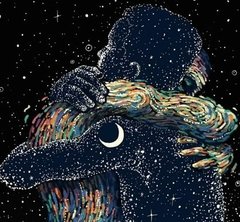
Dao, Dualities, Oneness, Creation, and the Importance of Distinctions for us Humans
silent thunder replied to Geof Nanto's topic in Daoist Discussion
Again, how grateful I am for all the wonderful folks who share here! Such words are treasure to me, and the timing of encountering them just this now... as I transition from my dream life to my waking life... uncanny! Thanks Bums... you have no idea how your words ring like bells in my life all through my days! -
I thought you "self-censored" me? You've created a list of ad hominems, none of which engage with the content of the information I posted from math professors. But there are other people reading this website - so you can't try to censor their ability to read the information from math professor Louis Kauffman. haha. Or Eddie Oshins - both of whom worked at SLAC. Do you really think the STanford Linear Accelerator Center is "playing games"? As I explained - I discovered the secret of Daoist logic from music theory - in high school. I rejected the Pythagorean theorem in 10th grade since from my music theory training I knew the logic was wrong. I then took quantum mechanics my first year of colllege - and so I learned about entanglement and nonlocality and noncommutative phase logic. I also studied the Tao Te Ching and Gregory Bateson's book "Mind and Nature: A Necessary Unity." He discusses logical paradoxes - specifically how Western logic lacks a sense of time, thereby creating the paradoxes. So this is what Louis Kauffman is addressing. The issue of time as a supposed outside parameter in physics is the key issue here regarding "what is truth?" Lee Smolin who also took his first quantum mechanics class from the same professor I studied from, Herbert J. Bernstein, now focuses on this issue of time in Western physics. So Alain Connes emphasizes this same truth - that time has to be included as the parameter and that the foundation of reality is based on frequency and time - as noncommutative logic. So noncommutative phase creates spacetime - the noncommutative phase is the 5th dimension. Astrophysics professor Paul S. Wesson figured this out as well - from studying Louis de Broglie. So there is a new discipline in science - noncommutative geometry - and so here are various scientists who have figured this out: Sir Roger Penrose and Stuart Hameroff (I've corresponded with Hameroff). Basil Hiley (I've corresponded with him) Lawrence Domash (taught at Hampshire College where I attended my first year and took quantum mechanics). Herbert J. Bernstein (my quantum physics professor). Alain Connes (focuses on how music is noncommutative phase logic - just as I also figured out). Eddie Oshins (worked at Stanford Linear Accelerator Center and taught Daoist Wing Chun - realized the secret of Neigong was noncommmutative phase logic). Math professor Louis Kauffman (worked with Eddie Oshins at SLAC, and I've corresponded with him). So as I stated - there were a couple Chinese electrical engineers claiming you didn't need noncommutative phase logic to understand complex numbers. I sent this research to Louis Kauffman and asked him what he thought - since that is the focus of his research. He said he would publish a response. So then you posted your "complex numbers" thread and so that inspired me to check up on Kauffman's research. I discovered he indeed had published his response. So I posted it here. It's all pretty straight forward. I've been researching this issue since the late 80s when I did private music training with a former University of Minnesota music professor - while I was in high school. So I tested into third eye music theory level at Hampshire College. It's a small private college based on the Oxford tutorial system - or like Cambridge. So i could have graduated early but instead I wanted a more radical populist education. So I transferred into UW-Madison after living in the wilderness and working in Alaska for 6 months. So I continued my music research - but again I was connecting it to philosophy of science. This became a "monograph" in 1996 called the Fundamental Force - after I experienced qigong master Effie P. Chow. Wandelaar - have you yet sought out and experienced the energy of a qigong master? Why don't you just do so. This is a great way to "test" your model of truth. haha. In China - as I quoted - after the qigong revolution - they realized that there had to be a revolution in science to explain qigong - something that unified and went beyond just quantum and relativity physics. Qigong master Yan Xin calls it a "virtual information field" that does the healing. Qigong master Zhang Hongbao calls it a "superluminal" yin matter as the "golden key." Qigong master Chunyi Lin whom I studied with directly said he read the book the Holographic Universe and that it accurately portrays what a qigong master experiences. Michael Talbot's popular book The HOlographic Universe was based on Karl Pribram and the collaborator of Einstein and Basil J. Hiley - David Bohm. But as Eddie Oshins points out - Pribram did not understand the noncommutative phase logic. Oshins tried to explain it to Pribram but Oshins had to leave Pribram since Pribram could not understand it. In fact Oshins was pissed that his "quantum psychology" field got co-opted by the New Age Freemason types who are indoctrinated into symmetric logistic equations. So this really is about different worldviews - the Western worldview goes back to Plato and is based on symmetric math. I have also corresponded with math professor Ian Stewart, author of "Why Beauty is Truth: A HIstory of Symmetry." So there you go - Truth - right in the title! He surveys the whole of Western mathematical logic as based on symmetric logic. Only problem is that it is not! The Pre-Socratic logic was noncommutative (just as Daoist logic is noncommutative) and the relativistic quantum logic is noncommutative. Western math originates from music theory - as math professor Luigi Borzacchini has detailed. I first corresonded with Borzacchini in 2000. I mailed him a music math equation that I had scribbled down after a dream. He responded - in snail mail - from Italy - yes my math was good but I had no historical proof that it had been used. Fair enough. So we continued corresponding over the years - a few times. But he is retired now. So some human cultures do not even count past "several" - WEstern mathematics is an artificial construct that ignores the vast ecological destruction from "entropy." So when math professor Joe Mazur published his "Euclid in the Rainforest" book - back around 2000 - I also contacted him, explaining I had studied conservation biology in Costa Rica, where the book takes place, and I did not think Western math was saving the rainforest, but rather destroying it. Professor Mazur's brother is a famous "number theory" math professor - Barry Mazur. Anyway I mentioned my music-math research. Mazur asked me to follow up on a lead that I had mentioned - David Fowler. Sure enough I discovered David Fowler's math book stating that music theory should be able to solve the mystery of how continued proportions were converted into incommensurability - or irrational magnitude real numbers. So this is then exactly what Professor Borzacchini had researched and he discussed this issue with Fowler - in an online math forum. So then math professor Mazur asked me to submit my research for publication because he said he thought it was very important. I mentioned quantum physics and I was challenging the whole "symmetric logic" paradigm of Western math, from the perspective of music theory - so of course my article was rejected without comment. Now Professor Emeritus Mazur is having a new book published on the perception of time and the logical paradoxes of time. So he told me he was going to include a chapter on music perception. I asked him to include precognition as well since I know precognition is real. So I will now look to see if his book got published. https://www.bgagency.it/images/pdf/editoria-anglosassone/en-2017-agenzie-rights-list-andrew-stuart-literary-agency-frankfurt.pdf Yes - it is 2018 - so should be out soon - called Zeno's Quiver - and the description is in that pdf. I copied it to my blog. http://elixirfield.blogspot.com/2018/09/no-really-complex-numbers-are-from.html No really... Complex numbers are from noncommutative phase logic, as is Reality
-
no voices, only the wonder of living. like the voiceless wonder of your first fuck. or the feeling of waking up and seeing it is , and has always been perfect, even the fear, the pain, the shit. just like being in a dream, and seeing that you are dreaming, and not taking it so serious. not that a dream is un-real, but it is also not as real as we think it is. that kind of feeling.
-
I had a dream years ago, where I was climbing up a very high tower trying to escape some kind of monster. I ended up hanging hundreds of feet in the air, grabbing onto a steel bar, there was only an abyss to fall into. I was stuck, and fearful. All at once, I saw that I just could let go. I let go and fell, all the while laughing my ass off. It was wonderful.
-
My earliest clear memory is of becoming lucid in a dream back when I didn't differentiate between dreaming and waking life... and I've been coming lucid in dreams on and off my entire life. I've had countless experiences in dreams that are more vivid than physical reality and as all experience serves to reveal my authentic nature through my response to stimuli, I have come to value dream experience as readily as physical ones and have come to appreciate dreaming as a very potent realm of self exploration, unfolding realization and cultivation. The unshakable, palpable sense that the waking world is akin to a shared dream has always resonated with me. And many cultures talk of this... The Tibetans and Aboriginal Peoples of Australia come to mind. As the dreaming mind works in symbols, in my experience it can be potent ground for initiating shifts in the aspects of our minds/selves that lie beyond our pinpoint/flashlight like rantional waking mind. Though I have seldom engaged in any traditional Magick aside from rudimentary divination (norse runes and tarot) and a healthy respect for following my intuition when it reveals itself, I have worked in my dreams my entire life to great effect. The Tibetan Yogas of Dream and Sleep by Tensin Wangyal Rinpoche is a book I recommend.
-
I had a dream where I met someone resembling a guy I used to be pals with back in the uni. In the dream we were is a sort of warehouse, and there he casually jumped off the rafters that were above head height, and I confessed I was wary of doing that, since I have pains and problems with my knees. Than someone else joined in -- and I told them about a cutting pains I have, running down the line from my upper jaw down to the neck and right chest area and to the liver I think? I pulled on it and a sort of a worm came out, or that was the concept I was trying to convey, and they sort of rolled their eyes and went with it - yeah, it's sort of like that. So the worm got tossed out, and they extended palms toward me, I felt warmth. Some unfamiliar music was playing, 5 clean tones played in a loop on a string instrument and two chords on a different string instrument. So the cutting pains have stopped, and the painful swollen lymph nodule I had on the underside of the jaw is gone. I could remember the melody for a while after waking up, but I am not trained in writing down music, so it is gradually drowned out. He had a set of prayer beads with him at times, and more sensitive than most of us were, so he often took his time before speaking, and at times when you got fired up or angry guy would just snicker at you, and you felt like a dolt. I wonder how is he? Didn't hear from him in years.
- 1 reply
-
- 7
-

-
while not into magic as a practice, I can comment on lucid dreams. after sitting in meditation for years, every day, My dreams changed to being lucid. did not "do" anything to make this happen, and at first it surprised me. I then came to see that this is nothing special, most folks who have any kind of long term meditation practice can end up with there dreams lucid. From my dreaming I see both the so called, "dream world" and the "real world" as being very much alike. In fact, i no longer know what the words, "real and un-real" mean other than a mental place holder or belief we are socialized to accept. One of my lucid dreams started off as the "being naked in public" dream, where I am nude, and no one else seems to notice, except me. common dream for many. then I knew I was dreaming, and decided to have some fun, and started to shout to everyone "Hay! look at me, I am buck ass naked" . most folks did not pay attention, but one man saw me and started to laugh. I stuck my dream hand through his chest, and he dissipated like a mist. I immediately knew that I did something wrong. Because although this was a dream, there was still a part of "realness" about it. still feel bad for that screw up.
-
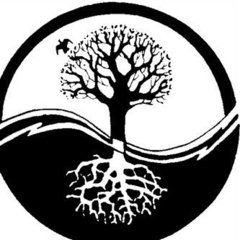
The identity-less and purposeless thread
Geof Nanto replied to CityHermit!'s topic in Forum and Tech Support
It’s only smooth-talking New Age pretend guru cats that can’t be trusted. Or so I’m told by a parakeet called Sid who lives near the local duck pond…… One day a cat arrived at the pond, bringing with it a murky, hematic odor of cynicism and unease. `Hey there, you guys,' the cat said, maintaining a polite distance. The cat was gray, and sat itself smugly on a large gray rock. 'Boy, are you ever an attractive-looking bunch of ducks! Seriously, I'm really impressed. I never even suspected ducks came as good looking as you guys, or halfway near as intelligent, either. I guess that just goes to show me, doesn't it? I guess that just goes to show that I don't know that much about ducks after all.' At first, the ducks glided off warily into the cold trembling pond, pretending not to be bothered, but never taking their eyes off the cat for one moment, either. `I'll tell you something, guys,' the cat continued, in a voice as gentle and intrepid as desire. 'I just came from the city and you don't have any idea how lucky you've got it out here. What a nightmare. What a cesspool of smog and urine and crime and poverty they've constructed for themselves in the city, boy. Dog eat dog, cat eat cat, cars running everybody over without so much as a hi or a how-de-do. Bang crash roar crash bang – I've had enough city life to last me a few thousand centuries or so. Which brings me, of course, to why I've decided to move out here to the woods with you guys. Fresh air, sunshine, plenty of exercise. And of course a strictly monitored vegetarian diet from now on. I'm taking charge of my life, boy, and taking it on the road. Call me an outlaw, if you wish; call me a rebel. But I'm tired of living the life society tells me to live. I'm finally going to live my life for myself, thank you very much. Come hell or high water.' While his smooth voice wetly purred, the cat licked his stubby, retractile paws and groomed his long twitchy whiskers, as if dressing himself for church. Then, giving the ducks a last fond look over his shoulder, he rested his head on the large gray rock and fell indefensibly asleep. `Frankly, I don't think you ducks are exactly the brightest flock of fowl I've ever come across in my rude travels,' Sid said, perched high atop a buoyant willow. 'We're talking a fat gray cat now, and that means cat with a capital C, A, T, and I can't believe I'm having to actually spell it out to you guys. Cats are what you call notoriously fond of fowl, fowl being you ducks and meboth. We're like this cat's dream of a main meal, and I don't care what he says about wildlife solidarity, or karma, or pantheism, or even free will. That cat wants to eat us alive. He wants to chew our flesh and rip our blood vessels into stringy pasta. But he wants to play with us first. He wants to tease us and cut us and watch us die slow. That's because he's a cat, and we're what you call fowl. Am I going too fast for you guys or what?' (From THE PARAKEET AND THE CAT by Scott Bradfield) -
started doing soto zen about 10-12 years ago. Sat in our little forest, 2-3 hours a day, 7 days a week. Now days, I just sit until I don't sit. Cliff notes version: had the spontaneous movements, (I had to look them up, and they are called "kundalini kriya" movements, from what I remember. never had a bad experience with these, and they eventually went away. After about 3 or 4 years, I stopped having nightmares. haven't had one in 7 or 8 years. My dreams became lucid. (I actually divide them into what I call "simi- lucid", where one is engaged in the dream, but if it starts to change in a way that is not good, then I can start over, or just change the story". then what I call "Lucid" dreams, where like most, one can fly, walk through walls, etc, the typical fully lucid dream, and lastly what I termed "wise dreams" which there seems to be some kind of mythic parable or story, where one just knows that something needs to be understood in it. this kind of dream is both lucid, and many times, I am both aware of the sleep REM state, and also aware, at the same time, being in bed. weird shit for sure. Started doing Nei gung, (hope that is the way it is spelled now days), and compression breath, and reverse breathing for about 40 mins a day in my sitting meditation, for the last couple of months. the amount of energy developed is much like doing a gram of coke. I had to cut back on the reverse breathing, as for my yang constitution, it was kind of overboard, Been looking for real information on nei gung breathing, or Taoist breathing, but only find shit on the internet. my acupuncturist gave me your web address. look forward to sharing experiences and tips with you all. cheers. zp





